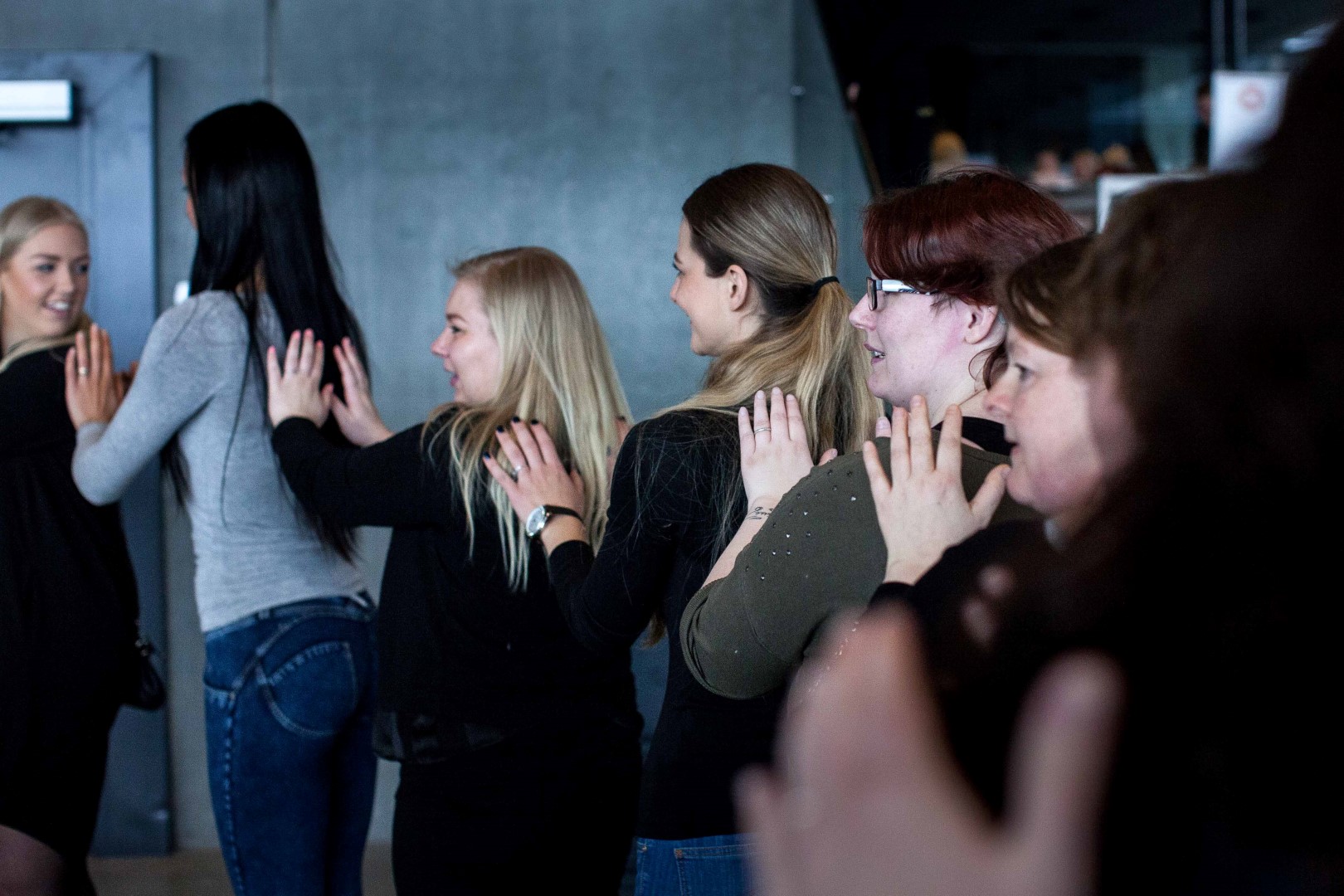[et_pb_section admin_label=”section”][et_pb_row admin_label=”row”][et_pb_column type=”4_4″][et_pb_text admin_label=”Community” background_layout=”light” text_orientation=”left” use_border_color=”off” border_color=”#ffffff” border_style=”solid”]
In the previous post, I reflected on “the diversity of play” as one strategy for “inviting playfulness” by allowing people to approach play in a way that feels meaningful to them.
While we can design for diversity in the way we represent play, and we can invite a diverse group of contributors, it’s impossible to control what makes up the core of the festival: the people, the community. We approach the notion of community as a space for mutual participation, or, in the words of Henry Jenkins (et al), a “particpatory culture”:
“A participatory culture is a culture with relatively low barriers to artistic expression and civic engagement, strong support for creating and sharing creations, and some type of informal mentorship whereby experienced participants pass along knowledge to novices. In a participatory culture, members also believe their contributions matter and feel some degree of social connection´with one another”
Cultivating a diverse play community where people are actively participating to explore play is probably our best bet to foster a strong movement towards a more playful world. When we know for certain that we are not alone, that other people feel the same urge to be playful, then we can easier muster the courage that is necessary to challenge the non-playful structures around us. In that light, it was immensely satisfying to experience how the diversity of play was mirrored in the diversity of the play community.
Like Bernie DeKoven said in his superbly playful keynote, and expanded upon in a blog post:
“But we are a play community, and playing the way we do, for fun, for everyone’s fun, in public – our fun little community becomes something else. To those who want to be seen as people who embrace life, embrace each other, embrace spontaneity, freedom, laughter; we are an alternative. An invitation. We play as if the game isn’t important. The rules aren’t important. As if the only really important thing is each other”
[/et_pb_text][et_pb_image admin_label=”Image” src=”http://www.counterplay.org/wp-content/uploads/2013/03/IMG_1966-Medium.jpg” show_in_lightbox=”off” url_new_window=”off” use_overlay=”off” animation=”left” sticky=”off” align=”left” force_fullwidth=”off” always_center_on_mobile=”on” use_border_color=”off” border_color=”#ffffff” border_style=”solid”] [/et_pb_image][et_pb_text admin_label=”Text” background_layout=”light” text_orientation=”left” use_border_color=”off” border_color=”#ffffff” border_style=”solid”]
In this community, there was an ongoing negotiation of meaning & purpose, just like when we play in other contexts. We came together from many different backgrounds, disciplines and parts of the world, and we challenged each other on everything from the rules of a game to the way we are together as people:
“When people agree on the terms of their engagement with one another and collectively bring those little worlds into being, they effectively create models for living” (Henricks, 2016)
Putting this much emphasis on the community, it’s obviously crucial that people actually feel that they are welcome and that the community is values their participation and contributions. Judging by the feedback we have received so far, it seems we are getting some things right:
[/et_pb_text][et_pb_testimonial admin_label=”Testimonial” author=”Mel Taylor” company_name=”Playful Being” url_new_window=”off” quote_icon=”on” use_background_color=”on” background_color=”#f5f5f5″ background_layout=”light” text_orientation=”left” use_border_color=”off” border_color=”#ffffff” border_style=”solid”]
I was inspired by the variety of people – ages, nationalities, interests, approaches – for whom playfulness and play are so key. There was such a powerful sense of a global community and a growing movement. I brought back renewed energy and enthusiasm and lots of happy memories.
[/et_pb_testimonial][et_pb_testimonial admin_label=”Testimonial” author=”Stephan Marchant” url_new_window=”off” quote_icon=”on” use_background_color=”on” background_color=”#f5f5f5″ background_layout=”light” text_orientation=”left” use_border_color=”off” border_color=”#ffffff” border_style=”solid”]
Counterplay is the place to be for playful people who are curious to new insights, new people and new adventures. It’s a journey, on both a personal level and on the level of the community. Counterplay = a way to transform the I into WE.
[/et_pb_testimonial][et_pb_text admin_label=”Text” background_layout=”light” text_orientation=”left” use_border_color=”off” border_color=”#ffffff” border_style=”solid”]
In the next and last post, I’ll take a look at how diversity and community can, in some cases, help cultivate a playful atmosphere.
[/et_pb_text][et_pb_image admin_label=”Image”] [/et_pb_image][et_pb_post_nav admin_label=”Post Navigation” in_same_term=”off” hide_prev=”off” hide_next=”off” prev_text=”Read the previous post in this series: %title” next_text=”Read the next post in this series: %title” use_border_color=”off” border_color=”#ffffff” border_style=”solid” /][/et_pb_column][/et_pb_row][/et_pb_section]

Leave a Reply